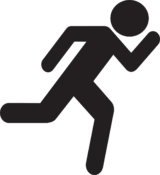What Happens During a Doctor’s Visit for a Head Injury? 🤕
Head injuries can be unsettling, whether from a minor bump or a more serious accident. Understanding what happens during a doctor’s visit for a head injury can help alleviate some of the anxiety. In this post, we’ll break down the steps a doctor typically takes to assess and treat head injuries, ensuring you know what to expect. Let’s dive in!
Table of Contents
1. Introduction
2. Initial Assessment 🩺
3. Diagnostic Tests 🔬
4. Treatment Options 💊
5. Follow-up Care 📅
6. Conclusion
7. FAQ ❓
Initial Assessment 🩺
The first step in a doctor’s visit for a head injury is the initial assessment. Here’s what usually happens:
– **Patient History:** The doctor will ask questions about how the injury occurred, symptoms you’re experiencing, and any previous head injuries. They’ll want to know if there was any loss of consciousness, confusion, or memory loss.
– **Physical Examination:** The doctor will perform a physical exam to check for signs of trauma, such as bruising or swelling. They’ll also assess neurological function by checking reflexes, vision, and balance.
Diagnostic Tests 🔬
Depending on the severity of the injury and the initial assessment, the doctor may recommend diagnostic tests:
– **CT Scan:** This imaging test helps identify any internal bleeding or fractures.
– **MRI:** An MRI provides a detailed view of the brain and is used when more information is needed.
– **X-rays:** Although not often used for head injuries, they can help in assessing any associated neck injuries.
Treatment Options 💊
Treatment varies based on the severity of the injury:
– **Mild Injuries:** Rest and over-the-counter pain relievers like ibuprofen are often recommended. Patients may also need to avoid strenuous activities until symptoms improve.
– **Moderate to Severe Injuries:** Hospitalization may be necessary for observation and treatment. This could include medication to manage symptoms, surgery to relieve pressure, or specialized rehabilitation.
Follow-up Care 📅
After the initial treatment, follow-up care is crucial:
– **Monitoring Symptoms:** Keeping track of any persistent or new symptoms is vital. This includes headaches, dizziness, or changes in behavior.
– **Regular Check-ups:** Scheduled visits with a healthcare provider ensure the injury is healing properly.
– **Rehabilitation:** In some cases, physical therapy or cognitive rehabilitation may be recommended to aid in recovery.
Conclusion
Understanding what to expect during a doctor’s visit for a head injury can make the process less daunting. From the initial assessment to follow-up care, each step is designed to ensure the best possible recovery. Remember, when in doubt, it’s always better to err on the side of caution and seek medical advice for any head injury.
FAQ ❓
Q: How serious does a head injury need to be to see a doctor?
A: It’s advisable to see a doctor for any head injury, especially if there are concerning symptoms like loss of consciousness, confusion, or persistent headaches.
Q: How long does it take to recover from a head injury?
A: Recovery time varies from person to person and depends on the severity of the injury. Mild injuries may heal within a few weeks, while severe injuries could take months or longer.
Q: Can I drive after a head injury?
A: It’s best to avoid driving until you’ve been cleared by a healthcare professional, as head injuries can impair your ability to operate a vehicle safely.
Remember, your health is a priority, so never hesitate to seek medical attention when it comes to head injuries. Stay safe! 🚑

